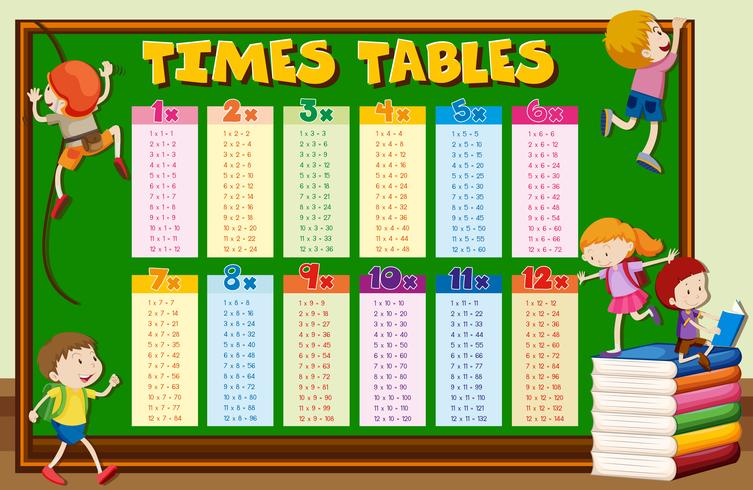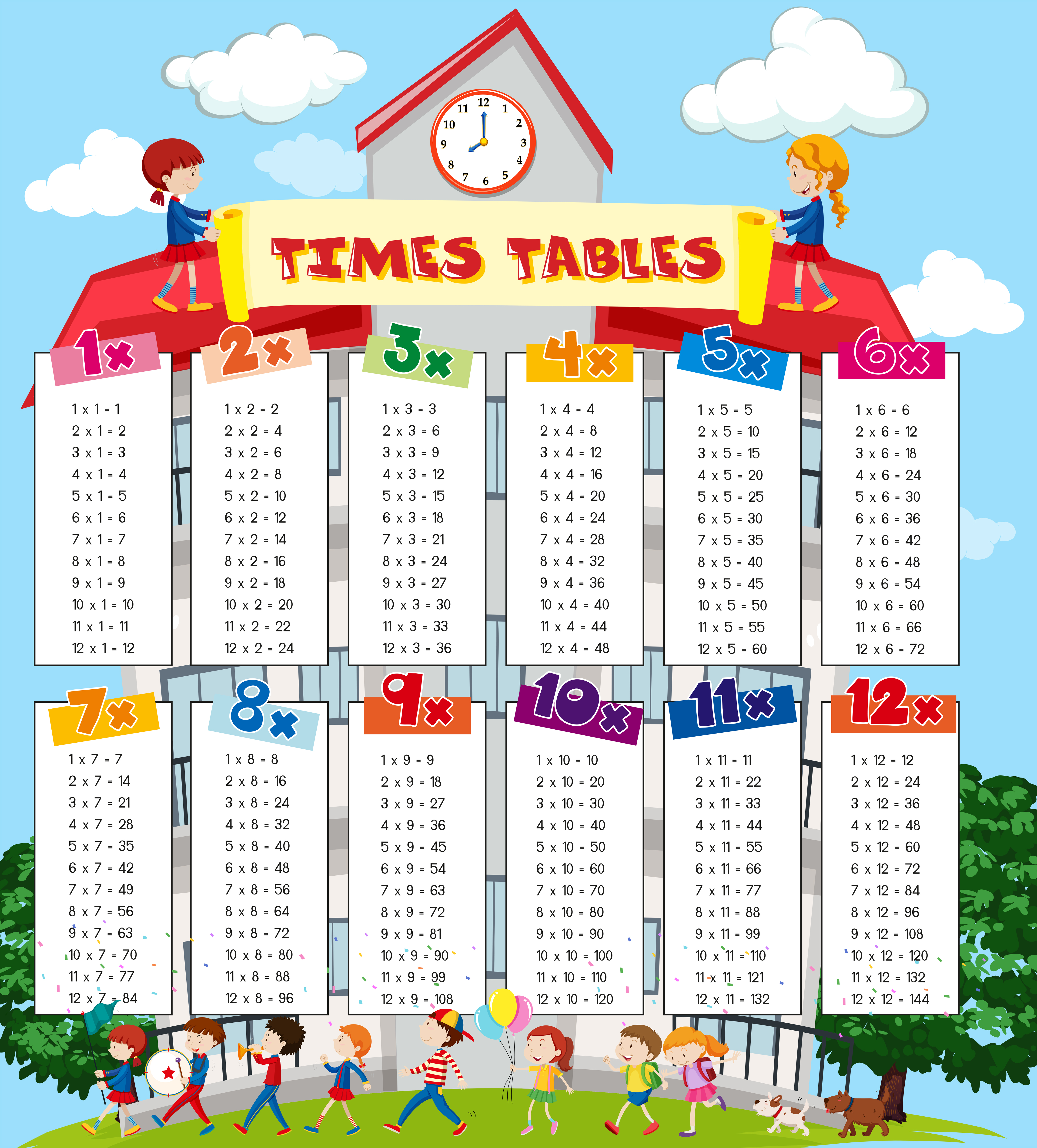

Number lines are used to find the sum by taking the leaps of required sizes. In early grades, the definition of multiplication is a repeated addition. Times Table Teaching Methodologies Multiplication as Groupingīy grade 2, kids are familiar with addition and it lays a foundation for what is multiplication. Kids apply these concepts in real-world word problems. They learn to develop and compare two patterns with two different rules. In 5th grade math, kids learn to compare the expressions with the sub-parts of the same. There, the patterns involve all the four basic operations. Analyzing patterns of numbers continues in 4th grade curriculum. Kids apply the knowledge of multiplication and other operations in multi-step word problems. The kids are introduced to new definitions like prime and composite numbers. Further, area models and T-tables are used to find the factor pairs of numbers within 100. They analyze a multiplication equation to know which quantity forms a group and how many such groups exist. They use the rectangular arrays and tape diagrams or bar models to understand the concept. In 4th grade math, kids analyze multiplication as a comparison using verbal statements. By the end of 3rd grade, kids are expected to learn various multiplication tables, 4 multiplication table, 6 multiplication table, 12 multiplication table etc. This leads to the introduction of multiplication tables. Also, kids can formulate a given real-world situation to a mathematical equation with simple multiplication involving a variable.Īnalyzing addition and multiplication patterns in a sequence is an integral part of 3rd grade curriculum. Kids can connect multiplication and division as reverse processes. The concept of division is explained using the number of groups of equal size ‘contained’ in a number. The basic characteristics like any number multiplied by zero are zero and any number multiplied by 1 is the number itself are also learned at this level. They also learn to split one of the numbers to make the computations. That is, kids understand that 4 groups of 3 objects each are exactly same as 3 groups of 4 objects each. Kids learn about the properties of multiplication without specifically naming them. That is, the value of x in the equation 8 × x = 24is 3 and the value of y in the equation 5 × 6 = y is 30. They can solve an equation with one of the three quantities missing and represented using a variable. Kids learn to write a mathematical equation like 5 × 3 = 15 when represented using an alignment of 5 groups of objects with 3 objects in each group. The 3rd grade math curriculum uses number lines, tallies and checkers arranged in rectangular arrays to reinforce the concept of repeated addition and grouping. This lays a foundation of multiplication as a repeated addition as well as grouping. Also, they use addition to find the total number of objects arranged in rectangular arrays. The foundation for the concept of multiplication is sowed in grade 2 itself by discussing equal groups of objects using blocks or checkers. These can be used to analyze different times tables – 4 times table, 5 times table, 6 times table, 8 times table, 9 times table, and 12 times table – which would give them a clearer understanding of the concept than just by-hearting the times tables. Math games with a multiplication chart can be used to get better fluency in computations. These can be used to show the repeated addition as well as grouping.Īnother manipulative for multiplication is rectangular arrays.Īrea models are similar versions of these arrays that convey the same concept.

The concept of multiplication can be introduced using math manipulatives like links, blocks, and checkers. SplashLearn replaces paper worksheets with fun games to deal with a topic. Introduction of math aids and fun math games for kids serve as a solution to this problem.

This gives a greater chance of getting bored and losing interest in the subject. The traditional methods of teaching mathematics involve solving problems with a pencil and paper sitting in a classroom. Initially, kids learn about multiplication as a repeated addition and later understands the grouping concept. Gradually, they advance to the basic math operations, addition, subtraction, multiplication, and division. They learn to count by mathematical modeling of the toys, chocolates etc. In early childhood education, kids get introduced to the wonderful world of mathematics with the things that they see around them.


 0 kommentar(er)
0 kommentar(er)
